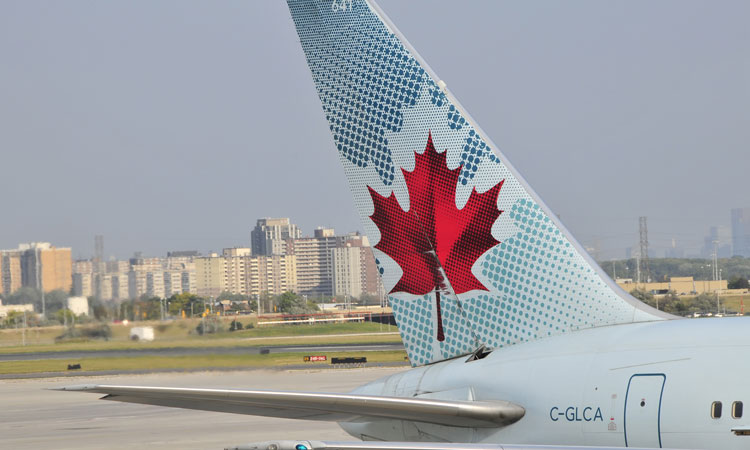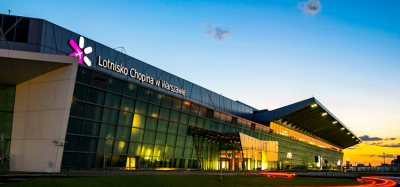To serve Canadians post-pandemic, Canada’s airports need a recovery plan
- Like
- Digg
- Del
- Tumblr
- VKontakte
- Buffer
- Love This
- Odnoklassniki
- Meneame
- Blogger
- Amazon
- Yahoo Mail
- Gmail
- AOL
- Newsvine
- HackerNews
- Evernote
- MySpace
- Mail.ru
- Viadeo
- Line
- Comments
- Yummly
- SMS
- Viber
- Telegram
- Subscribe
- Skype
- Facebook Messenger
- Kakao
- LiveJournal
- Yammer
- Edgar
- Fintel
- Mix
- Instapaper
- Copy Link
Posted: 26 April 2021 | Daniel-Robert Gooch | No comments yet
Daniel-Robert Gooch, President of the Canadian Airports Council (CAC), addresses the current state of the Canadian aviation industry and asserts the crucial need for both financial and regulatory support from the government to drive the recovery of the sector.


One of the unintended consequences of the COVID-19 pandemic is a chronic case of whiplash as Canada’s aviation community tries to adapt in real time to fast-changing circumstances. The good news is that we are not where we were at the start of 2021. On 13 April 2021, the federal government announced a financial support package for our largest carrier, Air Canada, that includes up to $5.4 billion in low interest loans and a $500 million equity stake. In exchange, Air Canada agreed to reinstate or provide interline agreements for 20 regional airports that had seen their service suspended in the past year and to refund ‘non-refundable’ tickets. Similar packages for other carriers are expected to follow shortly.
There are other positive signs as well, as airlines look to ramp up domestic and international service as early as summer 2021 and small airports and communities have access to new federal funding to reinstate routes.
But these, and other recently announced measures, face serious headwinds: a slower-than-anticipated vaccine roll out and an increase in the number of virus variants in the populations have amplified people’s uncertainty about travelling, stalling any short term recovery.
Stay at home
Both domestic and international travellers must navigate their way through 15 different sets of rules and restrictions – one for each province and territory plus separate, different air and land border rules for international travellers set by the federal government”
Moreover, Canada’s airports – and their industry partners – are dealing with a government that is actively discouraging any travel at all, even with additional safety and quarantine measures. All international flights are funnelled to four airports and travellers are required to be tested both prior to departure and on arrival, and then to quarantine at designated hotels for three days.
Both domestic and international travellers must navigate their way through 15 different sets of rules and restrictions – one for each province and territory plus separate, different air and land border rules for international travellers set by the federal government. The anti-travel campaign has worked: demand has been consistently down at zero to 15 per cent of 2019 levels. The effect on airports, which, until the onset of COVID-19 had relied on passenger-dependent revenue for over 90 per cent of their income, has been devastating.
While the government’s actions to protect citizens is both commendable and necessary, the reality is that our airport model has totally collapsed. Since the government has made it virtually impossible to travel, it has an obligation to protect Canadian airports, so that they are ready to emerge from lockdown and serve their passengers when the time is right.
Recovery needs a long-term plan
We need a national industry/government plan, similar to Australia’s National Economic Recovery Plan, that incentivises tourism and travel and also provides direct support for certain airport services.
There are many factors that affect what our recovery will look like, and when it will begin”
When that will happen is an open question. There are many factors that affect what our recovery will look like, and when it will begin. On the plus side, it appears that the vaccination programme may be completed in autumn 2021 and, coupled with the relief package, will allow our carriers to invest in rebuilding their domestic and international routes. But there are no guarantees. Canada is already in the grip of a third wave of infections and, while more vaccines are here, the rollout has been anything but smooth.
This only exacerbates the need for government action. Even before COVID-19, Canadian air travel-related taxes, fees and charges were some of the highest in the world. Air travel is very price-sensitive, and airports must compete with each other for service. If their rates increase too much, air carriers may not return or may do so at fares that are no longer competitive, driving Canadians to fly on foreign air carriers and out of American airports, contributing to a vicious spiral that further degrades air connectivity for Canadian communities. The long-term impacts on tourism, trade and local jobs would be incalculable.
Without decisive government action that includes a long-term commitment to the financial health and resiliency of our air sector, air travel will not only become a lot more expensive, but Canadians will have fewer choices of routes and destinations.
Too little government support
To date, Canada’s airports have received limited government support, providing relief for about a quarter of the cost of wages and about 30 per cent of the total annual fee that 22 airports must remit to the federal government as ‘ground lease rent’.
Canada’s airports are staring down revenue losses of $5.5 billion to the end of 2021, and new COVID-19-related debt of $2.8 billion”
While even these relatively small amounts have helped, Canada’s airports are staring down revenue losses of $5.5 billion to the end of 2021, and new COVID-19-related debt of $2.8 billion. While demand is continuing to hover at about 10 to 15 per cent of 2019 levels, operating costs have seen minimal reductions and are running at about 80 per cent of 2019.
The government has a huge stake in the successful recovery of the air sector. We need government leadership to create a comprehensive plan that takes into account the reality of Canada’s vast geography and relatively small population, coupled with our reliance on air service for access, wealth-creation and jobs.
As a first step to support airports’ recovery, we are calling on the federal government to:
- Implement a moratorium on ground lease rents and provide options for interest-free loans (or equivalent operational support) until the business recovers, which could take five years or longer
- Expand national transportation infrastructure funding to meet safety, security and transit needs and adapt to COVID-19 and climate change, including permanently expanded funding for safety infrastructure at Canada’s smallest commercial airports.
Daniel-Robert Gooch serves as the President of the Canadian Airports Council (CAC). He previously served as the CAC’s Director of Communications and Policy. As CAC President, Gooch oversees operations of Airports Council International North America’s (ACI-NA) Canadian division, leads Canadian government affairs and communications, and coordinates policy and regulatory efforts to effectively advance the airport industry within Canada. He serves as the Committee Secretary to the CAC Large Airport Caucus.
Related topics
Aeronautical revenue, Airport crisis management, Airside operations, COVID-19, Economy, Passenger volumes, Regulation and Legislation, Safety, Terminal operations


















